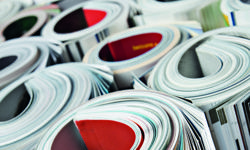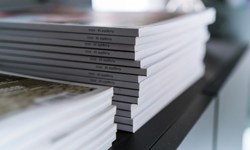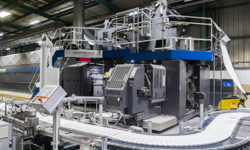
At the same time, it has secured planning permission for a 16,000 sq ft paper warehouse and builders are in place to start the work which will be completed early next year. Together, these represent an investment of £4m by the Southwold company.
“Our business is growing and to manage that we have to remain at the forefront of technology,” says James Cross, production director. “Already this year our turnover is 10% ahead, and profit 12% ahead, of the same period last year.”
The current 80-20% split between B1 and B2 production respectively might be nudged a little bit more in favour of B1 following the long perfector installation. Micropress produces a wide range of products from leaflets to magazine and catalogues in a range of formats and using different paper stocks. The company runs virtually 24/7 with just a break on Saturday night.
“We were the first company in the UK to use Inpress Control so we have long recognised the benefits of this online colour and register control system. With the latest generation version Inpress Control and Autoplate XL we know the press will brilliantly keep colour consistent and improve our makeready times. These are crucial tools for productivity and service and the short makereadies and quick turnrounds mean our prices remain competitive,” says James.
Also included is the company’s first wallscreen which is an integral part of Push to Stop operations and will give minders the opportunity to load and run up to 30 sections which will then run autonomously through the press with minimal human intervention. It will undoubtedly impress visitors to the plant, says Heidelberg.
The minders will receive training in the Push to Stop concept which means them allowing the machine to operate autonomously, moving from job to job, intervening only when they need to change settings or the job rotation. They are very positive about the investment, says the company.
“Heidelberg’s reliability is crucial to us – we rarely have breakdowns but when we do they have a fantastic team to get you back up and running in the quickest possible time,” says James. “We know what to expect from the presses; the print quality is brilliant and they are really productive. The challenge can be getting enough work to keep them busy!”
Micropress will continue to replace its machines every seven or eight years to ensure it runs to maximum efficiency. Once the new paper warehouse is complete, it will be able to store a wider range of stock and have more space for future production expansion.












